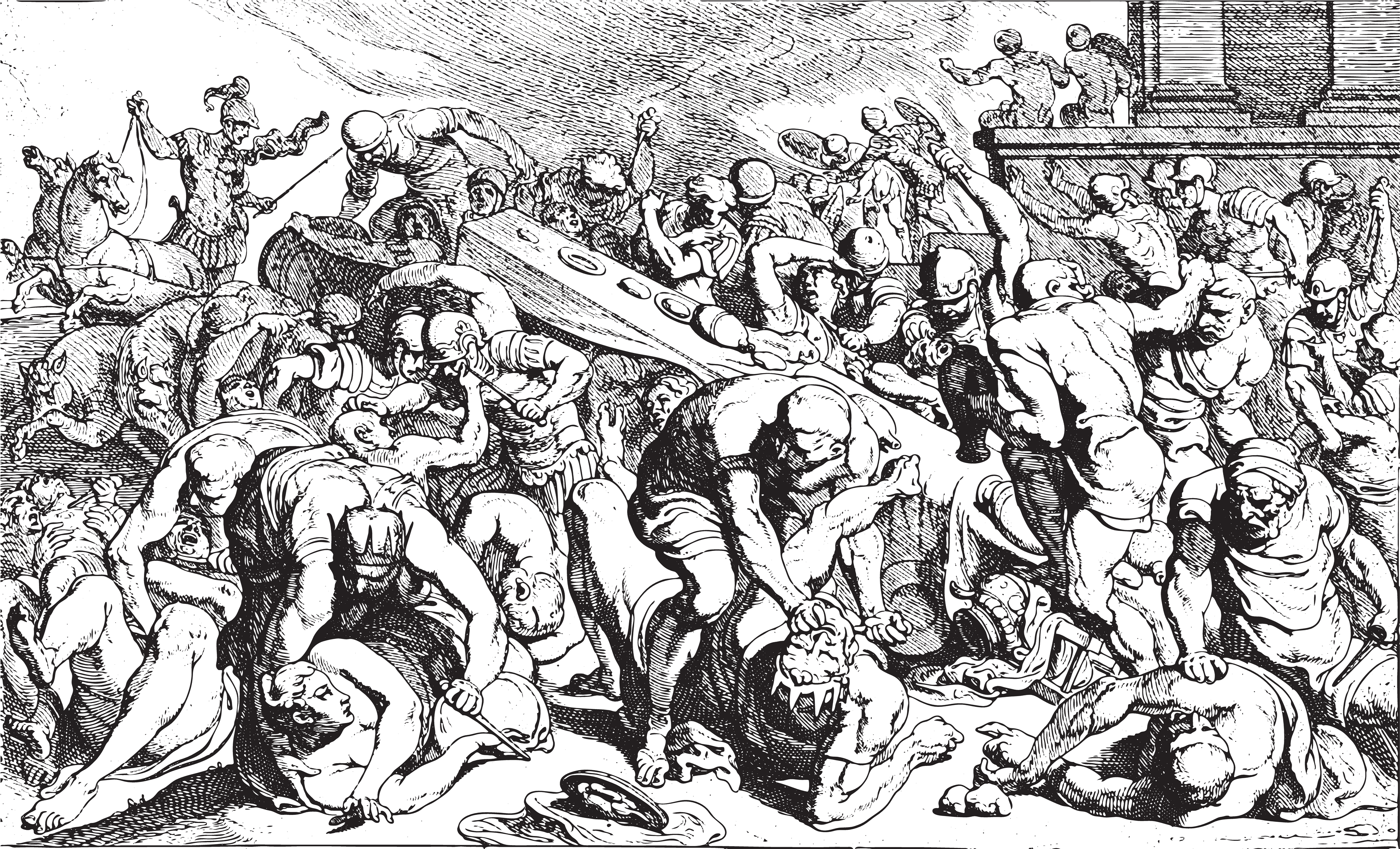Clytemnestra is one of the most intriguing and complex figures in Greek mythology. Her story is woven with themes of betrayal, revenge, power, and familial strife, making her a fascinating character.
Jump to:
- What is Clytemnestra Known For?
- The Myths and Legends of Clytemnestra
- What Powers Does Clytemnestra Have?
- The Symbols of Clytemnestra
- Clytemnestra's Relationships, Children, and Family Tree
- The Moral of the Story: Lessons from Clytemnestra
- Clytemnestra’s Worship and Legacy
- Frequently Asked Questions About Clytemnestra in Mythology
- Study Greek Mythology for £29
Recommended for you!
Best SellersWhat is Clytemnestra Known For?
Clytemnestra is best known as the wife of Agamemnon, the king of Mycenae and leader of the Greek forces in the Trojan War. But her notoriety stems largely from her act of vengeance—she famously murdered her husband, Agamemnon, upon his return from Troy. This act, driven by a mixture of personal grief and political ambition, marks her as one of Greek mythology’s most powerful and complex female figures.
Agamemnon’s death at the hands of his wife is often attributed to his own decision to sacrifice their daughter, Iphigenia, to ensure safe passage to Troy. Clytemnestra never forgave him for this. Her murder of Agamemnon, therefore, can be seen as both personal revenge and a political manoeuvre to seize power in Mycenae.
The Myths and Legends of Clytemnestra

Clytemnestra’s story is one of the most compelling in Greek mythology, filled with betrayal, revenge, and tragedy. Let’s explore three of the most significant events in her life, from her royal lineage to her important role in the cycle of vengeance within the House of Atreus.
Clytemnestra’s Royal Lineage and Family
Clytemnestra was born into royalty as the daughter of Tyndareus, the king of Sparta, and Leda. Her family ties are notable, as her half-sister was none other than Helen of Troy, whose abduction famously triggered the Trojan War. While Helen’s beauty and her role in the war are often central to her myth, Clytemnestra’s life is defined by her strength, intelligence, and the tragic events that ultimately shaped her fate.
The Murder of Agamemnon
When Agamemnon, Clytemnestra’s husband, left for the Trojan War, a series of fateful decisions unfolded. During his absence, Clytemnestra took Aegisthus as her lover, and together, they plotted the murder of Agamemnon. Her motives were deeply personal—Agamemnon had sacrificed their daughter, Iphigenia, to ensure favourable winds for his fleet.
Upon Agamemnon’s return from Troy, Clytemnestra executed her plan, killing him and seizing power. This act cemented her place in the mythological cycle of vengeance that runs through the tragic stories of her family.
Orestes and Clytemnestra’s Tragic End
The cycle of revenge did not end with Agamemnon’s death. Clytemnestra’s son, Orestes, exiled after the murder of his father, returned to avenge Agamemnon. In a tragic conclusion, Orestes killed his mother to fulfil his duty of vengeance, continuing the pattern of retribution that defined the House of Atreus.
What Powers Does Clytemnestra Have?
While Clytemnestra is not an Olympian goddess or a figure endowed with supernatural abilities, she holds power in a different sense. She is one of the few mortal women in Greek mythology portrayed as both a ruler and a political actor. Her power comes from her intelligence, her ability to manipulate those around her, and her capacity to act decisively, even in morally ambiguous situations.
Her story showcases her strength of will—she plots and carries out her husband’s murder with precision, all while maintaining control over her kingdom during his absence. This makes her a figure of both fear and respect in ancient tales.
The Symbols of Clytemnestra

Clytemnestra’s story is filled with symbolism that reflects her power, vengeance, and tragic fate. Several key symbols are closely tied to her character and the role she plays in Greek mythology:
- The Axe: One of the most iconic symbols associated with Clytemnestra is the axe she used to murder her husband, Agamemnon. This weapon represents the broader theme of retribution that dominates her story. It’s a symbol of her strength, decisiveness, and the brutal justice she exacts on Agamemnon for sacrificing their daughter.
- The Serpent: Another symbol often linked to Clytemnestra is the serpent, which appears in some versions of her myth in a dream she has before her death. This vision of a serpent foreshadows Orestes’ return and his role in her demise. In Greek mythology, serpents are symbols of danger, betrayal, and cunning—all qualities that are deeply embedded in Clytemnestra’s narrative.
Clytemnestra's Relationships, Children, and Family Tree
Clytemnestra’s relationships, particularly with her family, play a significant role in shaping her story and motivations. Her complex familial dynamics are central to understanding her actions and the tragic events that unfold in her life.
- Parentage and Siblings: Clytemnestra was born to Tyndareus, the king of Sparta, and Leda, making her part of a powerful royal family. Her half-sister was Helen of Troy, whose abduction sparked the Trojan War. While Helen’s story focuses on beauty and love, Clytemnestra’s tale is far more concerned with power, revenge, and justice.
- Marriage and Children: Clytemnestra married Agamemnon, king of Mycenae, with whom she had four children: Iphigenia, Electra, Orestes, and Chrysothemis. The sacrifice of Iphigenia by Agamemnon to gain favour with the gods is the catalyst for Clytemnestra’s deep resentment and desire for revenge. This pivotal event shapes her character and sets the stage for the murder of Agamemnon upon his return from Troy.
The Moral of the Story: Lessons from Clytemnestra

The story of Clytemnestra offers several moral lessons, particularly about the dangers of vengeance. Her tale serves as a reminder that cycles of violence often perpetuate themselves, leading to tragedy for all involved. In Greek myth, Clytemnestra’s actions set in motion a series of events that lead to her own death, as well as the suffering of her children.
Her story also raises questions about gender roles and power. As a woman who seizes control of her own fate in a patriarchal society, Clytemnestra challenges traditional notions of femininity and passivity. However, her use of violence to achieve her ends also complicates her legacy.
Clytemnestra’s Worship and Legacy
Unlike many figures from Greek mythology, Clytemnestra is not widely worshipped as a goddess or honoured in religious practices. Instead, her legacy lives on through the tragic plays and epics that tell her story. Works like Aeschylus’ Oresteia and Euripides’ Electra portray her as a complex figure—both a villain and a tragic victim of circumstance.
Clytemnestra’s story continues to resonate in modern retellings of Greek mythology, offering insights into themes of justice, power, and the human capacity for both love and revenge.
Recommended for you!
Best SellersFrequently Asked Questions About Clytemnestra in Mythology
What was Clytemnestra’s Role in the Odyssey?
Though Clytemnestra is most famous for her role in the tragic cycle of the House of Atreus, she is also mentioned in Homer’s Odyssey. In the epic, she serves as a cautionary figure—a warning of the dangers of a disloyal wife. When Odysseus encounters the ghost of Agamemnon in the underworld, Agamemnon laments his fate and contrasts Clytemnestra’s betrayal with the loyalty of Odysseus’ wife, Penelope.
How do you pronounce the name Clytemnestra?
Clytemnestra is pronounced Kly-tem-NES-truh. The name originates from ancient Greek, where it is spelled Κλυταιμνήστρα. This pronunciation reflects the classical roots of the name, making it an iconic one in Greek mythology.
What is Clytemnestra’s gender role in Greek mythology?
Clytemnestra defies traditional gender roles by assuming a position of power typically reserved for men in ancient Greek society. She takes control of the kingdom in Agamemnon’s absence, demonstrating both political and personal strength. Her willingness to exact revenge and manipulate events shows her capacity for leadership and defiance against expectations of female passivity.
Are Clytemnestra and Helen twins?
Clytemnestra and Helen were half-sisters, not twins. They shared the same mother, Leda, but had different fathers—Clytemnestra’s father was Tyndareus, while Helen’s father was Zeus, who had taken the form of a swan. Despite their close familial ties, their stories in Greek mythology are markedly different, with Helen being associated with beauty and Clytemnestra with vengeance.
What is Clytemnestra’s fatal flaw?
Clytemnestra’s fatal flaw is her unrelenting desire for revenge, which blinds her to the consequences of her actions. Her decision to murder Agamemnon sets off a chain of events that lead to her own demise. Her inability to break free from the cycle of violence and vengeance ultimately causes her tragic downfall.
Where is Clytemnestra buried?
Clytemnestra is said to be buried at Mycenae, alongside Agamemnon. According to myth, her
tomb was located near the palace, marking the tragic end of one of the most powerful figures in the House of Atreus. Some archaeological findings in Mycenae have even been linked to the legendary figures of this family.
What is the meaning of Clytemnestra’s name?
The name "Clytemnestra" is thought to mean "famed for her suitors" or "she who plots." This meaning is fitting given her reputation in mythology for her cunning and the role she plays in the downfall of Agamemnon. Her name reflects the complexities of her character, marked by intelligence and a capacity for manipulation.
What is Clytemnestra’s dream?
In some versions of the myth, Clytemnestra has a dream in which she gives birth to a serpent, symbolising the return of her son, Orestes, who will eventually kill her. This dream is a forewarning of her demise and a reminder of the cycle of vengeance that runs through her family.
Study Greek Mythology for £29
The story of Clytemnestra is just one of many fascinating tales in Greek mythology, rich with themes of power, revenge, and moral complexity. If you’d like to learn more about these myths and explore the characters, symbols, and stories that have shaped Western culture, consider enrolling in the Greek Mythology Diploma Course with Centre of Excellence. For a limited time, you can access the course at a discounted price of £29!













